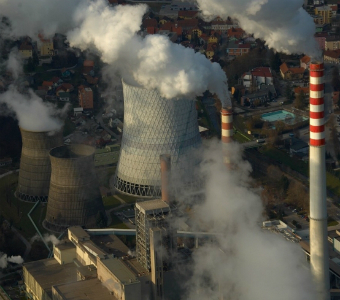“Disbursements are suspended […]”
In spite of all the projects in which Bankwatch is challenging the involvement of international financial institutions, one hardly ever has the opportunity to read this expression in one of the bank’s responses to our letters.
It was all the more satisfying then to receive a letter from the EBRD’s president Thomas Mirow (pdf) declaring that the bank is suspending the disbursement of its loan for the lignite thermal power plant TEŠ 6 in Šoštanj, Slovenia. The letter referred to the bank’s internal preliminary assessment of corruption allegations in the tender process for TEŠ6 that Slovenia’s state commission for the prevention of corruption published in February. (See more details in our press release.)
Apparently, however, the situation isn’t that clear-cut in the EBRD’s view. One day after Mirow’s letter another letter from the EBRD (pdf) specified that the suspension does not have a formal character, but that nevertheless “no further disbursements are possible until the conditions precedent for such disbursements are met, and there are currently some material ones that are not being met.”
That is still good news, but not as palpable as a formal suspension resulting from an investigation by the bank itself, which would have more substantial influence on the project’s development.
What I do take from the EBRD’s communication, though, is that alleged corruption is not the only controversial aspect of the TEŠ6 project that the bank is concerned about. And sure enough, the corruption case has only been one of the many controversial aspects that we and our partners have been communicating to the banks for a long time already:
- A complaint to the EIB from February 2011 notes the bank’s failure to assess the project’s compatibility with Europe’s 2050 climate targets, because the plant would swallow up almost the entire carbon budget for Slovenia by 2050.
- At the EBRD’s annual meeting in May 2011, Bankwatch has raised questions about the EBRD’s project appraisal for TEŠ6 with the bank’s staff.
- In a petition from summer last year, 18 000 people have asked the Slovenian government to focus the country’s energy plans on renewables and forget about fossil fuel and nuclear power.
- In complaints to the European Commission in October and November 2011, the inadequate assessment of the project’s CCS readiness and irregularities in the procurement procedure have been criticised respectively.
- An installation by Slovenian artist Marko Kumer-Murc condemned the EU’s financial and political support for the Sostanj lignite power plant project.
- An examination of the project’s latest investment plan showed a number of shortcomings including both methodological mistakes and unsubstantiated claims.
- The project’s economic viability, its alleged CCS-readiness, and irregularities in the public procurement have been raised in another complaint to the European Investment Bank in January 2012.
- Only last week, a public campaign was launched asking the Italian bank UniCredit to stop investing in coal projects, including the Šoštanj lignite power plant.
So, although the EBRD’s decision to freeze the loan disbursement cannot be understood as a final rejection of the Šoštanj lignite power plant project, it certainly goes a long way compared to the feedback we received earlier.
And I would like to think that our insistence on revisiting the loan decisions as well as the growing public pressure against financial support for coal from both public and private banks have at least helped in showing just how disputable the project is.
Never miss an update
We expose the risks of international public finance and bring critical updates from the ground – straight to your inbox.
Institution: EBRD | EIB
Theme: Energy & climate
Location: Slovenia
Project: Sostanj lignite thermal power plant unit 6, Slovenia
Tags: Sostanj | TES6 | coal | corruption | fossil fuels | success

